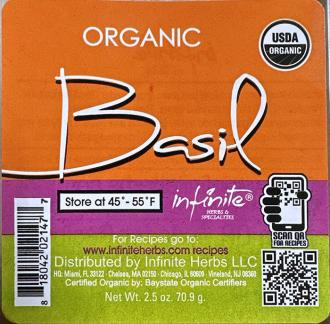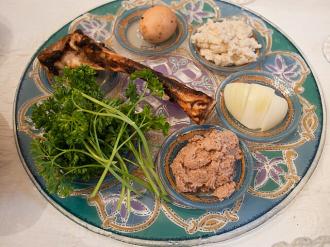An outbreak of E. coli O157:H7 infections that was linked to romaine lettuce sickened at least 23 people across 12 states between July 12 and Sept. 8, the Food and Drug Administration announced Friday.
The announcement came more than a month after the Centers for Disease Control and Prevention began investigating the cluster of cases Sept. 17.
This strain of E. coli produces a toxin that in some cases can lead to serious illness, kidney failure, and death. Eleven of the victims in this latest outbreak were hospitalized as a result of the infection, but there were no deaths reported.
Romaine lettuce has been implicated in three separate outbreaks of E. coli O157:H7 in the last two years; one in December 2017, one in spring 2018, and one in the fall 2018. The outbreak that occurred in spring 2018 was the largest and most deadly E. coli outbreak in the U.S. in decades. The type of E. coli involved in the latest outbreak was the same severe form of the pathogen as that involved in the two major E. coli outbreaks in 2018.
There have been no new illnesses related to this current outbreak since the CDC began its investigation, and the FDA’s announcement states that this latest outbreak appears to be over.
“Not all foodborne illness outbreaks are announced by the FDA or CDC, but after the severity of 2018’s outbreaks, it’s surprising that the FDA waited more than a month to inform consumers after discovering the outbreak,” says Michael Hansen, Ph.D., a senior staff scientist at Consumer Reports.
“Given the continuing problems with romaine, and the seriousness of O157:H7, the FDA should have made an announcement sooner and let consumers decide for themselves if they wanted to continue to eat romaine,” Hansen adds.
CR’s food safety experts, including Hansen and James E. Rogers, Ph.D., director of food safety and research, believe that it’s important for consumers to be aware when foods are contaminated with pathogens such as E. coli because the infections they cause can be deadly, especially for older, younger, or pregnant people, or members of other vulnerable populations.
When Do Consumers Get Notified?
When romaine lettuce was identified as the likely source of the outbreak, available data, including a lack of new cases, indicated that the outbreak was not ongoing and that the romaine eaten by sick people was no longer for sale, said Brian Katzowitz, M.S., health communications specialist at the CDC. The CDC generally posts outbreak warnings when there’s something actionable for consumers to do, Katzowitz said.
The FDA said this notification was actually made more quickly than it would be in many cases. The FDA said that when there’s not an immediate public health threat, this information would often not be released until it was announced in a more traditional scientific publication.
“In this case, while there was no actionable consumer information and the outbreak was over prior to the determination of a vehicle, given the noteworthy nature of this outbreak and an interest in accelerating awareness, we chose to communicate through an FDA statement in the short term in order to ensure full awareness by the public,” an FDA representative told CR.
However, by the time the FDA alerted consumers, it’s likely that a large segment of government, industry, and produce retailers were all aware of the contamination, says Bill Marler, a Seattle lawyer who specializes in food poisoning cases. “Even if it’s past its shelf life, I think it’s immoral not to tell the public about contamination as soon as it’s known, Marler says. “It undermines the public health agencies’ credibility.”
In a statement, the Leafy Greens Marketing Association, an industry trade group, said: “LGMA will use any information gathered in this investigation to help us improve the mandatory food safety practices that are at the heart of our comprehensive food safety program.”
“The farms which were identified worked very closely with the FDA and CDC and the California Department of Health to evaluate farm practices,” said Trevor Suslow, vice president of food safety at the Produce Marketing Association, a trade organization. “No one is treating this casually.”
What Consumers Should Know
While the FDA was able to trace the likely source of the outbreak to farms in central California, E. coli was not found in an extensive evaluation of farms, according to the agency.
“But consumers should know that while they’re healthy foods, leafy greens aren’t risk-free—they frequently are associated with foodborne illness, especially from E. coli O157:H7,” says CR’s Rogers. CR tests also recently found listeria bacteria on a number of greens bought at supermarkets in Connecticut, New Jersey, and New York.
Greens are extremely nutritious, and most people don’t need to avoid them unless there is an outbreak, Rogers says.
“But people most likely to be affected by foodborne illness—older adults, infants and young children, anyone with a compromised immune system, and pregnant women—should carefully consider whether to eat raw leafy greens, including lettuce,” he said. “The safest thing is to stick with greens you can cook.”














